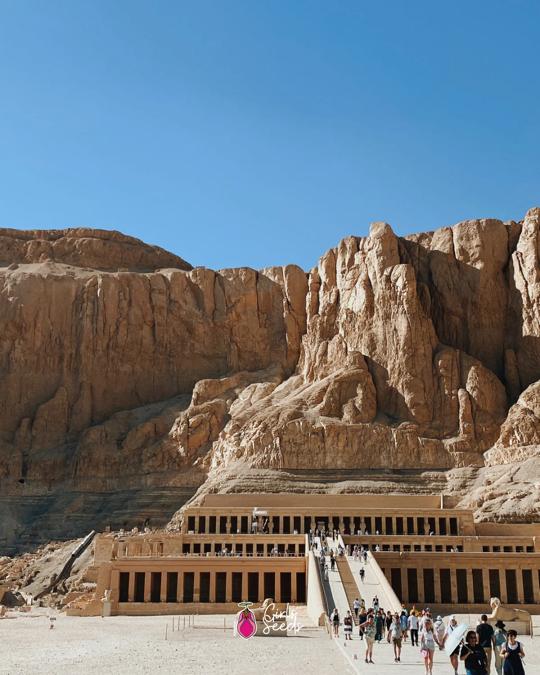
Just as we saw in other ancient civilizations, there are stories that the people of ancient Egypt were also cannabis enthusiasts and that they had certain knowledge about it’s therapeutic properties. This is due to the discovery of traces of the plant found in Egyptian artifacts dating back more than 4 thousand years.
It is important to highlight that before this discovery, traces of THC – the molecule responsible for the psychoactive effects of marijuana – had already been found in some funerary chambers and mummies, such as Ramses the Great’s, a pharaoh in 1213BC and of great importance in history. Additionally, a mummy believed to have been buried around 950 BC had a significant amount of THC, along with nicotine and cocaine, in its tissues. The highest concentrations of THC were found in the lungs, indicating that cannabis smoke was inhaled by this person in life. These and other discoveries lead many scientists to believe that the Egyptians used cannabis during their funeral rituals, famous for the mummification process and the burial of important belongings.
Much of our knowledge about ancient Egypt and its customs comes from surviving papyrus reports from that time. These ancient scrolls have successfully preserved many secrets of the period, from political and legal matters to agriculture and medical techniques. Occasionally the word ‘Shemshemet’ appears in these texts – especially in reference to medicine. Experts believe that this was a word given to refer to cannabis and there are some very specific reports about how it was used.
The Ramesseum medical papyrus, for example, mention a treatment that would have been used to treat glaucoma and other eye problems. The instructions were to grind the cannabis and leave it to marinate in the dew overnight. In the morning, you should wash your eyes with this mixture. Not surprisingly, there is modern evidence that confirms the correct use of cannabis in some of these treatments that date back so many years. For example, TCH – the most common cannabinoid found in the cannabis plant – has been found to have the potential to reduce intraocular pressure, which can cause significant damage to the eyes and result in glaucoma.
The Ebers papyrus, celebrated as the oldest complete medical journal ever discovered, dating back to around 1500 BC, indicated a mixture of cannabis and honey that should be introduced into the vagina, possibly for the treatment of colic or endometriosis. The anti-inflammatory and antioxidant properties of cannabis likely played a role in this treatment, which is being explored in a more modern way today.


In antiquity the plant was also widely used for more common applications. Hemp fabrics and ropes have been found in ancient sites around the world, from China to Persia, and Egypt is no exception. Nowadays, the use, cultivation and trade of cannabis is illegal in Egypt and those being caught are subject to imprisonment or even the death penalty. Still, it is not difficult to find hashish in the country, where men frequently consume it. There are studies that state that around 6.4% of people between the ages of 15 and 64 use cannabis, placing Egypt in the 25th position of the countries that consume the plant the most. It is known that there are plantations mainly in the Sinai region, although the quality is not as good as the one found in neighbore Lebanon.
As for CBD, the law is ambiguous, as there is no legal declaration differentiating cannabis from non-psychoactive marijuana products. This way, authorities can still state it as illegal substances. One example was Mustada Soliman, who was arrested for importing CBD oil in 2010 and later sentenced to death. Thanks to protests, he was eventually released. As the words “hash” and “hemp” in Arabic are the same, it ends up causing confusion about the legality of CBD products. Despite this, there is still a legal hemp industry.
Islam is the predominant religion in Egypt today, covering 85-90% of the population. Even though alcohol is prohibited, the use of hookah and tobacco is very common in Islamic countries and the use of cannabis is not prohibited (although there are controversies, as its consumption alters our normal state) and culturally it is quite common. This happens specially because countries in the Middle East, North Africa and Central Asia have the ideal conditions for growing the plant – including
Afghanistan (famous for landraces such as Pure Afghanistan), Lebanon, Morocco, among others. One of the aspects of Islam is Sufism, considered a more mystical line of the religion and some Sufis have reported using cannabis in rituals as a way of connecting to the spirit. Alchemy is an essential part of Arab culture and, because alchemists could easily distill alcohol by then, they were one of the pioneers in the art of making hashish and it was the Sufis who propagated this culture.
The taste for the collective loss of senses has been a trait of Sufism since its emergence in the Middle Ages. Some Arab historians have attributed the discovery of the herb’s hallucinogenic properties to a Sufi saint, Shayk Haydar, around the year 1115 of the Christian calendar. There are legends that he, the founder monk of this current, tasted cannabis on a walk and, after chewing it, went from his calm to excited state, thus convincing himself that the plant was a divine gift. He took the knowledge to his disciples who began to think that the plant elevated the spirits.
With that, his followers began to cultivate hashish but, contrary to Haydar’s requests, they did not keep secrets about its use. Thus, hashish spread throughout the Middle East, being consumed in different ways: some roasted its leaves and chewed them with handfuls of sugar and sesame seeds, others used it as an ingredient for pies. Eventually, it began to be smoked in pipes. Over time, its use was no longer restricted to Sufism, but the herb continued to be associated with this line of the religion.